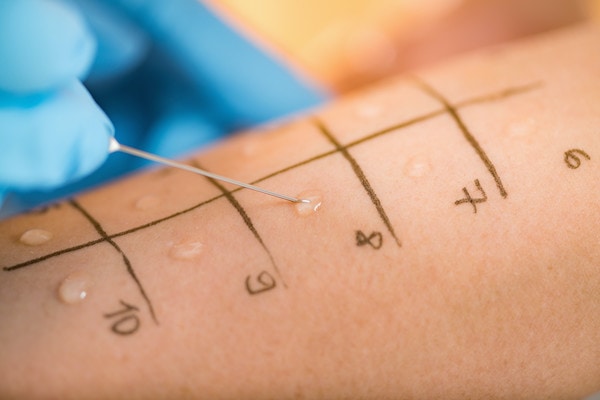EFSA Report on Gluten Detection in Cereals
The European Food Safety Authority (EFSA) report on gluten detection in cereals is a cornerstone document that provides comprehensive guidelines and methodologies for the analysis of gluten content. This report is particularly relevant to those involved in food manufacturing, quality management, compliance, and research & development within the food sector.
Gluten, a protein composite found primarily in wheat, barley, rye, and triticale, has significant implications for individuals with celiac disease or non-celiac gluten sensitivity. Ensuring accurate detection of gluten content is crucial to maintaining compliance with labeling regulations and protecting public health. The EFSA report aims to provide clear, scientifically validated methods that can be used by laboratories and food manufacturers.
The scope of the report includes detailed methodologies for extracting gluten from various cereal samples, including wet milling techniques, dry milling processes, and enzymatic hydrolysis. It also covers the analysis of different forms of gluten, such as gliadin and hordein, which are specific to wheat and barley, respectively.
One of the key aspects addressed in the report is the use of immunochemical methods for detecting gluten, which include enzyme-linked immunosorbent assays (ELISAs) and lateral flow tests. These methods rely on monoclonal antibodies that specifically bind to gluten peptides. The report provides a thorough discussion of the advantages and limitations of these techniques.
The EFSA report also emphasizes the importance of validation studies in ensuring the reliability and accuracy of test results. It outlines the criteria for validating immunochemical tests, including precision, accuracy, and reproducibility. Additionally, it discusses the role of reference materials in standardizing gluten analysis across different laboratories.
Another important section of the report is dedicated to the interpretation of test results. This includes guidelines on how to handle positive and negative results, as well as recommendations for reporting findings to regulatory authorities. The report also addresses potential sources of error in gluten detection, such as cross-contamination during sample preparation or the use of non-specific antibodies.
The EFSA report is an essential resource for food manufacturers and quality managers looking to ensure compliance with EU regulations on labeling foods that contain or are derived from cereals containing gluten. It provides a clear framework for implementing robust gluten detection protocols, thereby safeguarding public health and maintaining consumer trust.
- Wet milling techniques
- Dry milling processes
- Enzymatic hydrolysis methods
- ELISA-based immunochemical tests
- Lateral flow assays for gluten detection
- Validation criteria for immunochemical tests
- Use of reference materials in standardization
- Interpretation guidelines for test results
The report also highlights the importance of continuous improvement in gluten detection methodologies. As new technologies emerge, it is crucial to stay updated with the latest scientific advancements and regulatory changes. This ensures that laboratories remain at the forefront of food safety practices.
In conclusion, the EFSA report on gluten detection in cereals provides a comprehensive guide for accurate and reliable analysis of gluten content. Its detailed methodologies and guidelines are invaluable tools for quality managers, compliance officers, R&D engineers, and procurement professionals working in the food sector. By adhering to these standards, stakeholders can ensure that their products meet regulatory requirements and provide safe, high-quality food to consumers.
Applied Standards
The EFSA report on gluten detection is aligned with international standards such as ISO 15896:2007 for the analysis of wheat flour, rice, corn, barley, and oats. These standards provide a framework for the correct application of methodologies and ensure consistency across different laboratories.
For specific cereals like rye and triticale, the report draws upon EN 15896:2007, which offers detailed procedures for assessing gluten content. The use of these internationally recognized standards enhances the credibility and reliability of gluten detection results.
The report also emphasizes the importance of following current regulatory requirements set by authorities like the European Commission and the Codex Alimentarius Commission. These regulations ensure that food products are safe and accurately labeled, especially for those with dietary restrictions due to gluten sensitivity or celiac disease.
Eurolab Advantages
As a leading laboratory in the field of food and feed testing, Eurolab offers unparalleled expertise in gluten detection. Our advanced facilities and state-of-the-art instrumentation enable us to provide precise and reliable results that meet the highest quality standards.
We have extensive experience in handling complex samples and ensuring accurate identification of gluten content using various methodologies recommended by EFSA. Our team of highly qualified scientists and technicians is dedicated to staying abreast of the latest developments in food safety and regulatory compliance.
Our commitment to excellence is reflected in our adherence to international standards and our participation in proficiency testing programs. This ensures that our results are accurate, consistent, and trustworthy. Clients can rely on Eurolab for comprehensive gluten detection services that meet their specific needs and regulatory requirements.
Competitive Advantage and Market Impact
Adherence to the EFSA report on gluten detection offers a competitive edge by ensuring that food products are accurately labeled and meet regulatory standards. This is especially important for companies dealing with gluten-free products, as mislabeling can lead to serious health risks.
- Achieves compliance with EU regulations
- Ensures accurate labeling of foods containing gluten or derived from cereals containing gluten
- Maintains consumer trust and satisfaction
- Promotes safe food products for individuals with celiac disease or non-celiac gluten sensitivity
- Enhances brand reputation through reliable testing services
- Supports continuous improvement in gluten detection methodologies
The implementation of these standards also has broader market impacts, including increased demand for gluten-free products and enhanced consumer awareness about food safety. By staying ahead of regulatory changes and technological advancements, Eurolab continues to lead the way in providing accurate and reliable gluten detection services.





